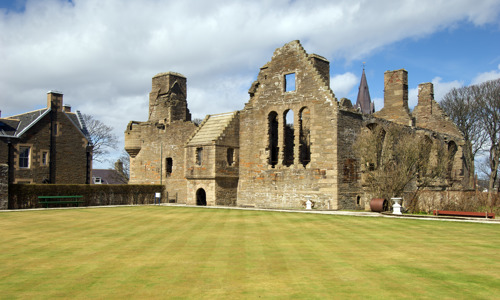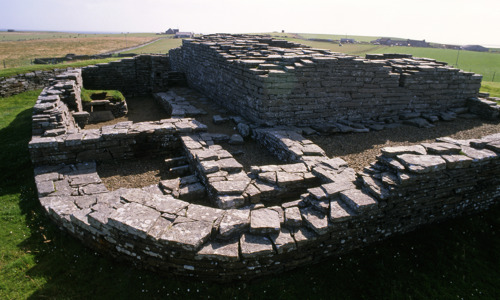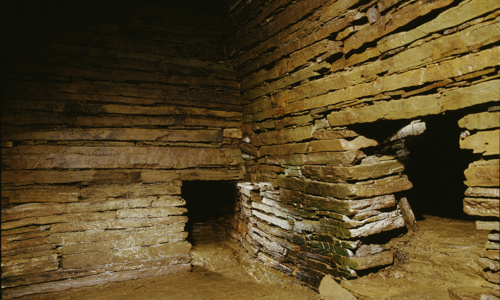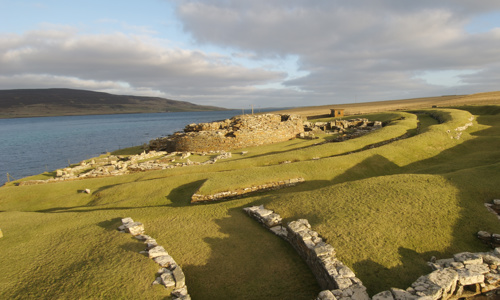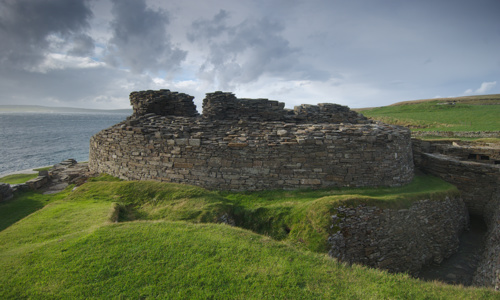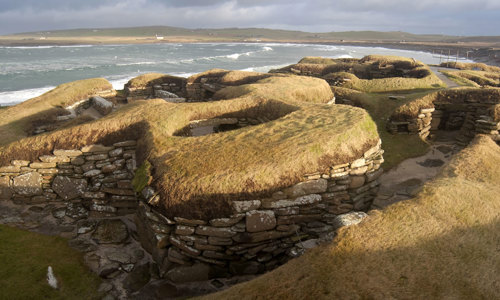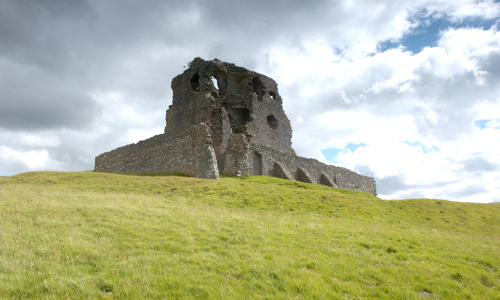History
Under the earth
Grain Earth House was discovered in 1827, probably during ploughing. An amateur excavator digging in 1857 is said to have uncovered ancient walls and domestic refuse.
The original passage and lower levels of steps survive at Grain Earth House, in addition to the main chamber. The long curved passage and the oval chamber are finely built, with four stone pillars supporting the roof. At the foot of the entrance stair are two recesses or niches.
From nearby excavations we can see that it didn’t exist in isolation: it was part of a larger settlement of stone roundhouses and at least one further souterrain.
Uncertain purpose
Earth houses were not dwellings, but stone-lined underground passages. They’re more commonly known as souterrains, and are found in Brittany, Cornwall, Ireland and eastern and northern Scotland.
Within Scotland there are distinct regional types. Angus and Perthshire is home to some massive souterrains, averaging 46m2 in area, while those in the northern isles – including Grain Earth House – are significantly smaller, providing just 5m2 of space. The northern sites are probably earlier in date, built at the end of the first millennium BC, while the Angus and Perthshire souterrains probably date from the first two centuries AD.
What were they used for?
Various theories have been proposed regarding souterrains’ original function. Some have suggested they may have been places of refuge, but it’s more likely they were used for storage for food as they would have had a stable year-round temperature. Northern examples are so varied that it is likely these structures served different functions.


